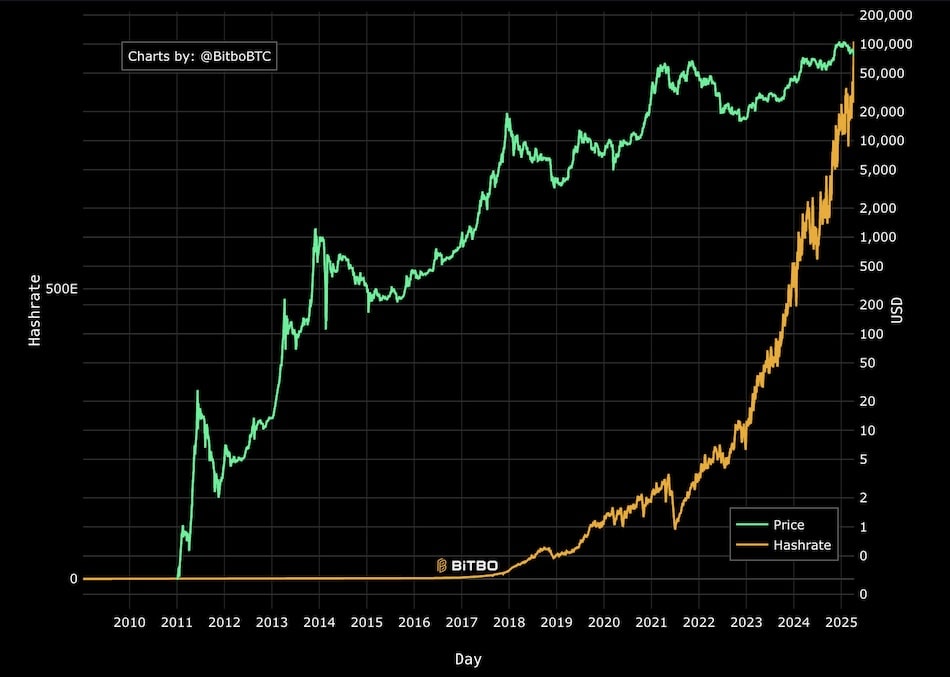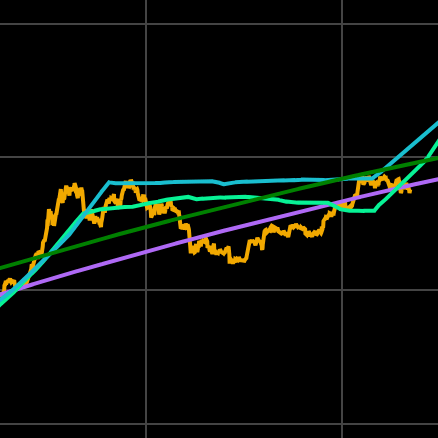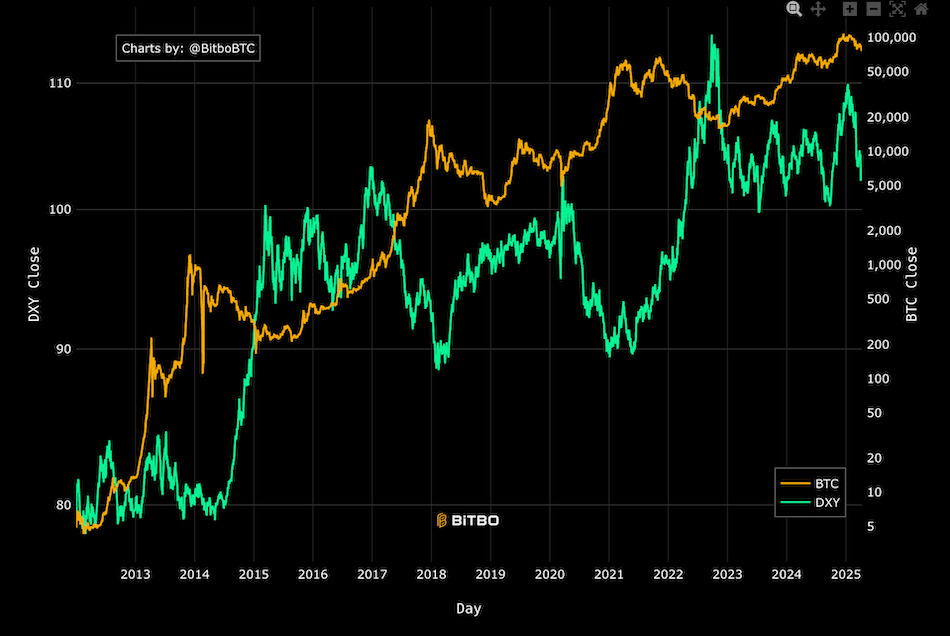
Key Takeaways
- Bitcoin's hashrate hit 1 Zettahash per second for the first time.
- The milestone comes amid a nearly 30% drop in Bitcoin's price.
- New mining hardware and cleaner energy are driving the hashrate surge.
The Bitcoin network’s computing power has hit a historic milestone, surpassing 1 Zettahash per second (ZH/s) for the first time.
That’s 1,000 Exahashes per second—a 1,000x increase since 2016, when Bitcoin first reached 1 EH/s.
Market downturn
The milestone comes despite a sharp market downturn.
Bitcoin has fallen nearly 30% from its January peak of $109,000, dipping below $76,000 on some exchanges.
Some reports recorded lows of $74,460.
This drop coincides with broader financial market losses, as U.S. markets shed $6.6 trillion in just two days, spurred by recession concerns following new tariff announcements by President Donald Trump.
Discrepancies in hashrate data
Data from mempool.space showed Bitcoin’s hashrate peaking at 1.025 ZH/s on April 5, while Coinwarz reported a higher figure of 1.1 ZH/s at block height 890,915.
Discrepancies in reported data are due to different averaging methods, which can produce variations of up to 40 EH/s, according to Bitcoin expert Jameson Lopp.
Importance of hashrate
Hashrate reflects the total computing power securing the network.
A higher figure means stronger security and resistance to attacks.
Despite falling prices, large-scale miners are scaling operations with next-gen machines like Bitmain’s S21 and MicroBT’s M60 series.
Miners’ response to market conditions
Mitchell Askew, head analyst at Blockware Solutions, said:
Miners are doubling down: expanding sites and plugging in more efficient machines.
Shift to cleaner energy sources
Cheaper and cleaner energy sources—like hydro and solar—are increasingly being used in mining hubs such as Texas, Iceland, and Norway.




